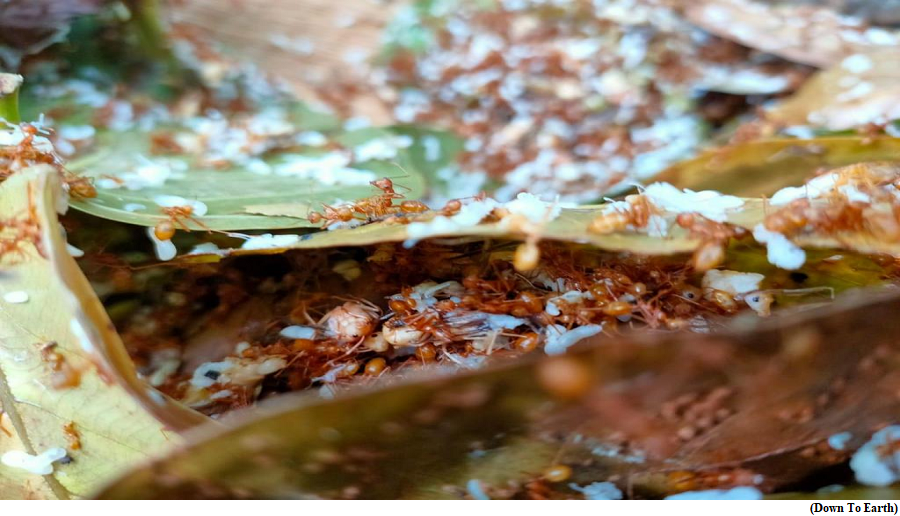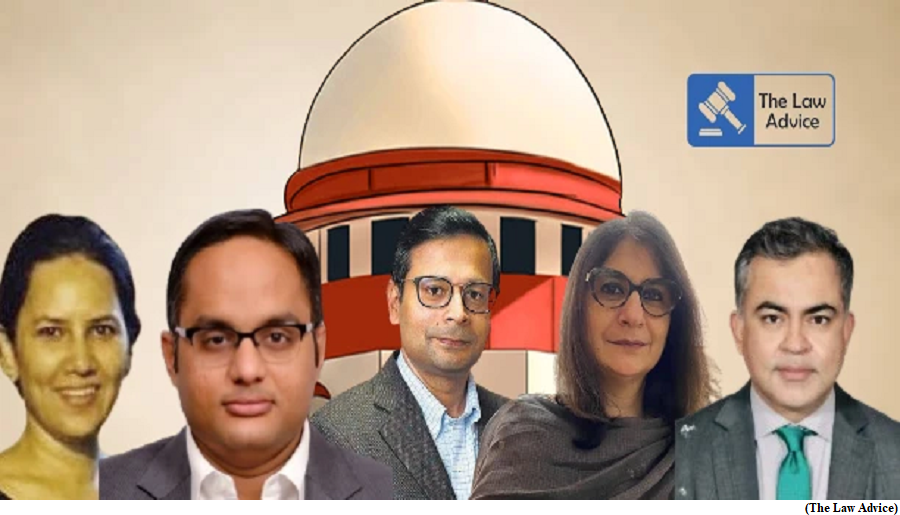Mayurbhanj red ant chutney receives GI tag (GS Paper 3, Economy

Why in news?
- The Similipal kai chutney made with red weaver ants by the tribal people of Odisha’s Mayurbhanj district received the geographical identity tag on January 2, 2024.
- The savoury chutney is popular in the region for its healing properties and also deemed important for nutritional security of the tribal people.
Nutrition:
- The scientists of OUAT Bhubaneswar analysed the red weaver ants and found it contains valuable proteins, calcium, zinc, vitamin B-12, iron, magnesium, potassium, sodium, copper, amino acids, among others. Consuming the species can help boost the immune system and prevent diseases.
- Many indigenous people from Mayurbhanj district venture into nearby forest to collect kai pimpudi (red weaver ant).
- The tribal healers also prepare a medicinal oil in which they dip the ants along with pure mustard oil. After a month, this concoction is used as a body oil for babies and to cure rheumatism, gout, ringworm and other diseases by the tribes. The local people also consume this to stay fit and strong.
Indigenous:
- The red weaver ants are indigenous to Mayurbhanj and are found in abundance in the jungles of every block area of the district, including in the Similipal Tiger Reserve, throughout the year.
- Each year, tribals collect around three quintals of kai pimpudi from the forest in the district.
Habitat:
- The red weaver ants form colonies with multiple nests in trees. Each nest is made of leaves stitched together with the silk produced by their larvae.
- They mostly lodge in trees like mango, sal, jambu and jackfruit. The nests are strong enough against wind and impermeable to water.
- Kai’s nests are usually elliptical in shape and range in size from single small leaf folded and bound onto itself to large nest consisting of many leaves and measure over half a metre in length.
Kai families:
- The Kai families consist of three categories of members — workers, major workers and queens. Workers and major workers are mostly orange coloured.
- Workers are 5-6 millimetres long, major workers are 8-10 mm long with strong legs and large mandibles and queens are 20-25 mm long and greenish brown coloured.
- They feed on small insects and other invertebrates like beetles, flies and hymenopterans.
Sting:
- They do not sting but have a painful bite into which they can secrete irritant chemicals from their abdomens.
- They are also recognised as bio-control agents because they are aggressive and will prey on most arthropods entering their territory. They protect a variety of tropical crops against insect pests, acting as an alternative to chemical insecticides.
About Geographical indications:
- Geographical indications assign products to the place of its origin. It conveys an assurance of quality and distinctiveness for such goods.
- Under Articles 1 (2) and 10 of the Paris Convention for the Protection of Industrial Property, geographical indications are covered as an element of Intellectual Property Rights.
- They are also covered under Articles 22-24 of the Trade Related Aspects of Intellectual Property Rights (TRIPS) Agreement.
SC Legal Services Committee
(GS Paper 2, Judiciary)
Why in news?
- Recently, the Supreme Court judge Justice BR Gavai has been nominated as the Chairman of the Supreme Court Legal Services Committee (SCLSC), replacing Justice Sanjiv Khanna, the seniormost judge of the top court after the Chief Justice of India (CJI).

What is the Supreme Court Legal Services Committee?
- The Supreme Court Legal Services Committee was constituted under Section 3A of the Legal Services Authorities Act, 1987, to provide “free and competent legal services to the weaker sections of society”, in cases falling under the top court’s jurisdiction.
- Section 3A of the Act states that the Central Authority (the National Legal Services Authority or NALSA) shall constitute the committee.
- It consists of a sitting SC judge, who is the chairman, along with other members possessing the experience and qualifications prescribed by the Centre.
- Both the chairman and other members will be nominated by the CJI. Further, the CJI can appoint the Secretary to the Committee.
Who does the SCLSC comprise?
- As of date, the SCLSC consists of chairperson BR Gavai and nine members nominated by the CJI. The Committee, in turn, can appoint officers and other employees as prescribed by the Centre, in consultation with the CJI.
- Besides this, Rule 10 of the NALSA Rules, 1995, entails the numbers, experience, and qualifications of the SCLSC members. Under Section 27 of the 1987 Act, the Centre is empowered to make rules in consultation with the CJI, by notification, to carry out the provisions of the Act.
What is the need for legal services and how is it dispensed to the people?
- The need for providing legal services has been underlined in many provisions of the Indian Constitution.
- Article 39A states, “The State shall secure that the operation of the legal system promotes justice, on a basis of equal opportunity, and shall, in particular, provide free legal aid, by suitable legislation or schemes or in any other way, to ensure that opportunities for securing justice are not denied to any citizen by reason of economic or other disabilities.”
- Moreover, Articles 14 (right to equality) and 22(1) (rights to be informed of grounds for arrest) also make it obligatory for the State to ensure equality before the law and a legal system that promotes justice based on equal opportunity.
- Although the idea of a legal aid programme was earlier floated in the 1950s, it was in 1980 that a committee at the national level was established under the chairmanship of then SC judge Justice PN Bhagwati.
- The Committee for Implementing Legal Aid Schemes started monitoring legal aid activities throughout India.
NALSA:
- In 1987, the Legal Services Authorities Act was enacted to give a statutory base to legal aid programmes. It aims to provide free and competent legal services to eligible groups, including women, children, SC/ST and EWS categories, industrial workers, disabled persons, and others.
- Under the Act, NALSA was constituted in 1995 to monitor and evaluate the implementation of legal aid programmes and to lay down policies for making legal services available.
- A nationwide network has been envisaged under the Act for providing legal aid and assistance. It also disburses funds and grants to State Legal Services Authorities and NGOs for implementing legal aid schemes and programmes.
SLSA:
- Subsequently, in every state, State Legal Services Authorities (SLSA) were established to implement NALSA’s policies and directions, give free legal services to people, and conduct Lok Adalats.
- An SLSA is headed by the Chief Justice of the respective High Court and includes the senior HC judge as its Executive Chairman. While the HC Chief Justice is the patron-in-chief of the SLSA, the CJI is the patron-in-chief of NALSA.
DLSAs:
- Similarly, District Legal Services Authorities (DLSAs) and Taluk Legal Services Committees were established in districts and most taluks. Situated in the District Courts Complex in every district, each DLSA is chaired by the District Judge of the respective district.
- The Taluka or Sub-Divisional Legal Services Committees are headed by a senior civil judge.
- Collectively, these bodies organise legal awareness camps, provide free legal services, and supply and obtain certified order copies and other legal documents, among other functions.



